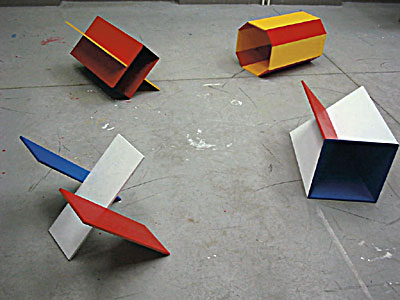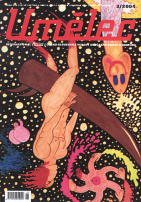| Umělec 2004/3 >> Matìj Smetana | Просмотр всех номеров | ||||||||||||
|
|||||||||||||
Matìj SmetanaUmělec 2004/301.03.2004 Jiří Ptáček | new face | en cs |
|||||||||||||
|
Matìj Smetana was born in Prague in 1980, spent his fourth year in the painting studio of Petr Kvíèala at the Faculty of visual arts in Brno. Each of his realizations are based on one peculiar, cunning conception. He sets himself free topics but only when they have clear limitations. He’s already wittily expressed himself with Occam’s razor project. He drew pictures of knives on small cuttings of tracing paper. Readers were asked to affix them to words that were not necessary to the text.
Part of Smetana’s work plays with the tension we experience in confrontation with symbols of national identity. In the audio record Jan Nepomucký, the best known Czech Baroque saint speaks from beyond the grave. We can hear peculiar sounds in the amateur recording, but Jan Nepomucký doesn’t want to explain anything and he doubts that his speech makes sense. Whereas we might hope to learn something from the long-dead individual, he doesn’t fulfill our expectations. Jan Nepomucký is inhumanly human and stays aloof from his legendary status. Even though he touches on ideology, in the end, he doesn’t consider it merely good or bad. Also characteristic of Smetana’s work is his interest in the relationship of art objects and 3D objects with precise attributes. First he spun the land area of the Czech Republic until it looked like a cylinder. After that he created Hradèanoid, an elongated cylindrical object made of wire mesh. The author’s working methods elevate to the category of abstract minimalist sculpture. He created it precisely according to the rotating silhouette of Hradèany, the Prague Castle. The Flags objects emerged from the designs of four national flags. Smetana adhered to vexillological standards, but took care that each board contained a single color and that the flags were recognizable from any angle. For each, he established a special intersection of geometric figures. Smetana was not being ironic; he just analyzed the relations of the pictures to their contents and to each other, and how a slight adjustment of form can radically alter the number of potential perspectives. He investigated the number of ways people can live after nuclear war Last painters (Poslední Malíøi), a cynical comic strip; he found three. He examined other limits in his animation It’s just a film (Je to jenom film) based on the fact that trailers are independent films and we recognize their form. He chose three trailers of classic horror movies, he redrew them, frame by frame, and spliced them back together. As a title he used a slogan from one of the trailers: “To avoid fainting, keep repeating: It’s only a movie, only a movie...” He thought it interesting: the authors warn us that they really want to scare us but they proceed with illusory means. He retained the original sound of the trailers, so we are drawn into action by screaming and squeaking; the drawn picture brings us back to reality. One cannot fall for it and it doesn’t fulfill our concept of a horror genre. What is usually parallel is nonparallel here—and disturbing.
01.03.2004
Рекомендуемые статьи
|
|||||||||||||











Комментарии
Статья не была прокомментированаДобавить новый комментарий